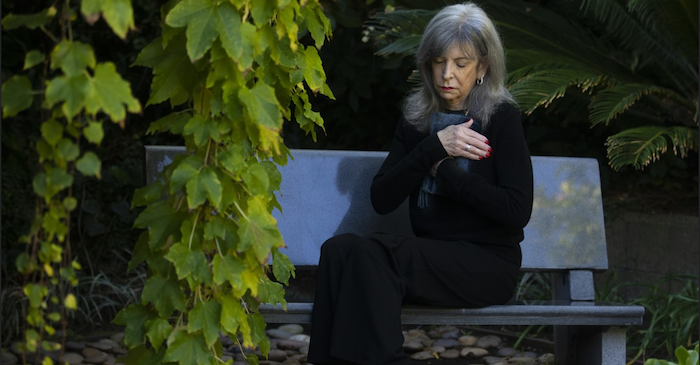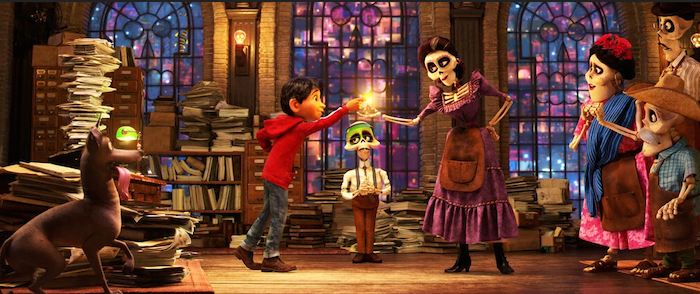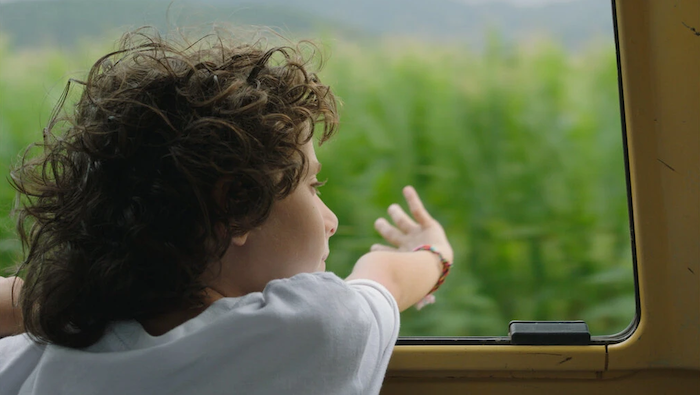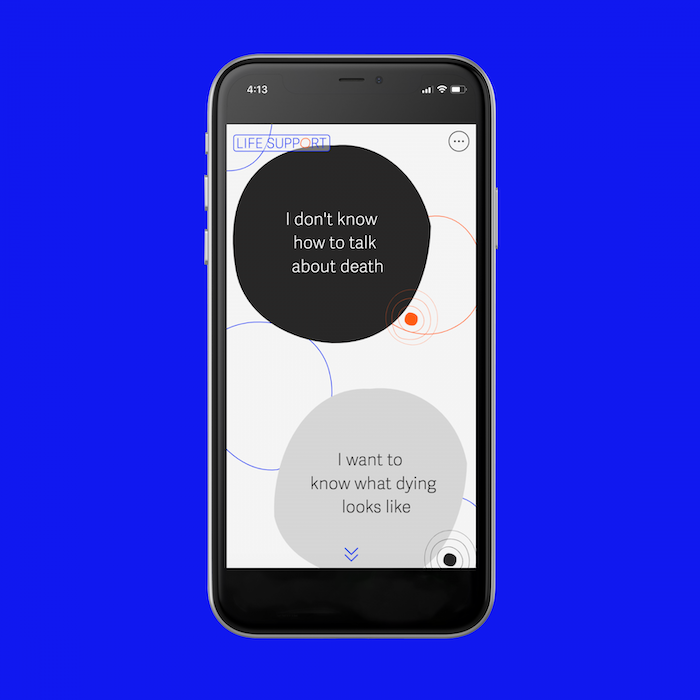
By Kim Christensen, Ben Poston
Martin Huff was 67 when he fell off his bicycle, banged up his knee and spent a couple of hours in a Riverside County emergency room before walking out under his own power.
Ten days later he was in hospice care, diagnosed as terminally ill by a small Covina provider of end-of-life services that said he was weak and wasting away, with six months or less to live.
Five years after that grim prognosis, however, Huff was still very much alive. He testified in federal court that no one from California Hospice Care had ever given him a medical exam before claiming he was dying.
“I really never knew exactly what the deal was on the hospice,” he said.
Huff is among a legion of mostly older Americans targeted for audacious, widespread fraud in an industry meant to provide comforting care in their final days, a Los Angeles Times investigation found.
Like Huff, many are unwitting recruits by unscrupulous providers who bill Medicare for hospice services and equipment for “terminally ill” patients who aren’t dying.
Intense competition for new patients — who generate $154 to $1,432 a day each in Medicare payments — has spawned a cottage industry of illegal practices, including kickbacks to crooked doctors and recruiters who zero in on prospective patients at retirement homes and other venues, The Times found.
The exponential boom in providers has transformed end-of-life care that was once the realm of charities and religious groups into a multibillion-dollar business dominated by profit-driven operators.
Nowhere has that growth been more explosive, and its harmful side effects more evident, than in Los Angeles County.
The county’s hospices have multiplied sixfold in the last decade and now account for more than half of the state’s roughly 1,200 Medicare-certified providers, according to a Times analysis of federal healthcare data.
Scores of providers have sprung up along a corridor stretching west from the San Gabriel Valley, where California Hospice Care was located, through the San Fernando Valley, which now has the highest concentration of hospices in the nation.
“There are too many providers in L.A. County, and too many providers who are in it for the wrong reasons,” said Edo Banach, who heads the National Hospice and Palliative Care Organization, the largest U.S. trade group for hospices. “Folks who go into this for the wrong reason generally do not do a good job.”
Much more than money is at stake.
Some patients who unknowingly enrolled in hospice later discovered they had signed away their rights to life-saving emergency medical treatment, state inspection records show. Others endured excruciating pain in their final days when providers failed to deliver the comforting care they desperately needed.
Still others suffered the consequences of neglected, festering sores that developed maggots or resulted in hospitalizations.
Privacy laws and government reports that keep the names of patients, doctors and hospice administrators confidential make it difficult to quantify and humanize many of the cases.
But The Times found that since 2008, regulators have cited hospices in California more often than anywhere else in the country for the most serious types of violations, four times as many as states such as Texas and Georgia, which also have large numbers of providers.
Despite those citations, California and federal regulators have rarely fined, suspended or shut down deficient hospices, state reports show. Oversight has been weakened further during the coronavirus pandemic, as regulators suspended requirements for most hospice inspections and limited the types of complaints they investigate.
California, which has among the lowest barriers to setting up a new hospice, also leads the nation in violations for enrolling patients without medical proof they were terminally ill.
The Times’ analysis revealed that Los Angeles County hospices discharged patients 80% more often than providers nationwide, highlighting a rate that federal authorities say is a red flag for Medicare fraud.
California Hospice Care claimed that Jesse Staten suffered from terminal heart failure when it signed him up for end-of-life treatment. His predicted six months to live expired in 2012, but he didn’t: When The Times contacted him eight years later, he was still going strong.
“I’m hanging in,” said Staten, 75. “I’ve got a lot of issues in my blood and I have other issues, but I can’t complain.”
Federal prosecutors accused California Hospice Care of bilking taxpayers of $7.5 million in illegal payments in connection with Staten, Huff and scores of other ineligible Medicare recipients. The hospice owner and two doctors were sentenced to prison, and several others were convicted or pleaded guilty in the scheme.
Many of the hospice’s patients were addicts lured by the promise of free narcotic painkillers, prosecutors said.
Some were enlisted by a doctor who collected a bounty from the hospice on each, according to his indictment.
One was a 47-year-old woman who lost her place on a waiting list for a liver transplant when she signed up for hospice, which prohibits curative care. It took her months to get reinstated, and she died not long after finally receiving a new organ.
“That’s the last hope, and having that person removed from the liver donor list by placing them in the program is conduct that is hard to understand,” U.S. District Judge James Otero said when sentencing a hospice nurse to 18 months in prison. “That’s callous.”
::
Conceived as an end-of-life option for terminally ill patients, hospice care properly delivered has been a godsend for millions of dying Americans and their families. It provides palliative care and prescription drugs, nursing services, medical equipment, supplies and spiritual counseling for those diagnosed with six months or less to live.
The U.S. hospice industry took root in the mid-1970s but flourished only after Medicare began covering its services in 1983. For-profit providers sprung up to meet a growing need that outstripped the capabilities of charities and religious institutions that pioneered end-of-life care.
In the last 20 years, the number of U.S. providers has roughly doubled, while Medicare spending on hospice has grown sixfold, to $19.2 billion a year. More than 1.5 million Medicare beneficiaries now receive care from some 5,000 hospices, nearly a quarter of them in California.
“Virtually all of the growth is of for-profit providers, which appear to be crowding out the local nonprofits that established the hospice model and had a desire to maintain its integrity,” said Michael Connors, a long-term care advocate with California Advocates for Nursing Home Reform.
For-profit operators now make up 70% of all hospices certified by the Centers for Medicare and Medicaid Services and 91% of those in California. In Los Angeles County, they account for 97%.
Many provide excellent care.
Satisfaction surveys reported by hospices nationwide show that more than 80% of respondents rate their hospice as a 9 or 10 out of 10, but in L.A. County that figure drops to 74%. Respondents in L.A. also were less likely to report that hospices always gave them the help they needed.
Most hospice care is provided in patients’ homes, but services also are rendered at stand-alone facilities, nursing homes and assisted-living centers. Regulatory inspections and financial audits are infrequent, making the system a soft target for scammers.
Complaints about shady operators began lighting up the California Senior Medicare Patrol hotline in mid-2017 and have not let up, said Sandy Morales, who oversees the federally funded statewide hotline whose mission is to help Medicare beneficiaries prevent, detect and report fraud.
“It’s all over Southern California: Riverside County, Hemet, Indio, Long Beach, Los Angeles, Bakersfield,” she said. “Right now, it’s huge.”
Since January 2019, her agency has forwarded more than 100 cases of suspected hospice fraud to federal investigators, Morales said. One doctor’s office in Los Angeles County recently reported that 10 patients appeared to have been fraudulently enrolled by a hospice.
Fraudsters stick to a familiar script, enticing or duping Medicare recipients into signing up for services they don’t need, she said. They send recruiters door-to-door and to churches, food banks, senior centers and apartment complexes, often misrepresenting hospice as an “extra” Medicare benefit that pays for nursing visits, hospital beds or other needs.
‘It makes no sense. I can’t imagine there are 60 hospices in Burbank that are doing it the right way. There can’t be enough people for 60 hospices there.’
Jan Jones, chief executive officer of the California Hospice Network
The pandemic has spun off new schemes, she said, with unscrupulous recruiters now enticing prospects with hand sanitizer, gloves and promises of other COVID-19 “freebies.”
Many who sign up don’t even realize they are in hospice care.
“They’ll say, ‘No, I’m not dying. I wanted help with housekeeping and cooking and that’s what I signed up for,’” Morales said.
In May 2017, the daughter of an Alzheimer’s patient told a state investigator that a marketer for All Seasons Hospice in Paramount signed up her mother with a promise of 24-hour nursing care. When no one showed up, she called the hospice and was told the only 24-hour service was by phone.
The hospice administrator acknowledged the bogus sales pitch but mostly shrugged it off.
“It is a dog-eat-dog situation out there, very competitive,” the administrator told inspectors, according to a state report that did not name the employee. “I have no control over what these marketers say or do. They do what they want and promise anything to get the patient.”
The Centers for Medicare and Medicaid did not respond to specific questions about the extent of hospice fraud, but said in a statement that the agency aggressively seeks to ferret it out.
“CMS identifies fraud, waste and abuse in hospice services utilizing cutting-edge data analytics, medical review and program integrity investigations,” it said. “In instances of potential fraud, CMS refers those providers to law enforcement for further criminal investigation and for appropriate administrative actions.”
The U.S. Department of Health and Human Services’ Office of Inspector General reported in July 2018 that inappropriate billing and fraud by hospice providers cost taxpayers “hundreds of millions of dollars,” but the full extent is unknown.
The watchdog agency declined to comment on the scope of hospice fraud and said it could not provide a count of cases it has investigated. The Department of Justice did not respond to repeated requests for its prosecution numbers.
But according to interviews with hospice providers and industry experts, and a review of law enforcement releases on individual cases, state licensing reports, lawsuits and federal data, fraud is widespread.
“Hospice fraud remains absolutely rampant in the United States,” said Mark Schlein, an attorney with the Los Angeles firm Baum Hedlund who specializes in hospice whistleblower lawsuits. He links the fraud in large part to the industry’s unfettered growth.
“That translates into much more money being paid to hospice companies by federal healthcare programs,” he said. “When Willie Sutton was asked, ‘Why do you rob banks?’ he said, ‘Because that’s where the money is.’”
::
More than two dozen hospices pepper a mile-long stretch of Victory Boulevard, an east-west artery in the San Fernando Valley. One well-worn office building in the 13600 block in Van Nuys is home to 15 providers.
“Hospices have been growing like mushrooms around here,” said one of the other tenants, who declined to give his name for fear of alienating his neighbors in the complex, where monthly rents start at an enticingly low $399.
Scores of others are in neighboring Valley communities, all part of a sprawling regional hotbed of for-profit hospices. Many are small operations, some purchased as investments by people with little or no healthcare experience.
Since 2010, the number of providers in Los Angeles County has skyrocketed from 100 to 618, federal data show.
North Hollywood is home to 35 hospices, while Glendale has 60, Burbank has 61 and Van Nuys 63.
By comparison, New York State and Florida each have fewer than 50.
With a population of 103,000, Burbank has a per capita rate of hospices that is nearly 40 times the national average, according to The Times’ analysis.
“It makes no sense,” said Jan Jones, recently retired chief executive officer of the California Hospice Network, a coalition of nonprofit providers. “I can’t imagine there are 60 hospices in Burbank that are doing it the right way. There can’t be enough people for 60 hospices there.”
New York, Florida and dozens of other states require prospective hospice owners to obtain a “certificate of need” to justify the demand for additional providers before they can get licensed.
California providers must be free of felony convictions, but there are few other qualifications for starting or operating a hospice beyond getting licensed by the state and certified by Medicare, a process that costs only a few thousand dollars.
“There is not a high-cost entry point to start a hospice program, unlike a hospital or a nursing home,” Jones said. “I think a lot of people think it is an easy business, which frankly I think is wrong. It is very complicated and complex, and very important to the people we serve.”
::
With the explosive growth have come serious quality-of-care issues.
The Times’ review of more than 800 state licensing and inspection reports revealed instance after instance in which patients were deprived of comforting care because of the actions — or inaction — of hospice providers.
Mismanaged pain medications, neglected infections, missed nursing visits, incompetent or dishonest home health aides — all were cited among hundreds of violations that required hospices to draw up plans to correct the problems but resulted in little or no disciplinary action.
Patients suffered for lack of pain medication or had maggots crawling out of festering foot sores and head wounds, state inspection records show. Others died alone because no one from the hospice showed up when needed.
“We will never heal from that devastation,” Joyce Craig said of the final moments of her brother, Peter Craig, 74, a partner in a Los Angeles accounting firm who died of cancer in 2017.
The California Department of Public Health licenses and regulates hospices to ensure they meet state and federal standards but has limited ability to punish offenders. The only fines it can impose are for breaches of patient confidentiality.
To qualify for hospice, patients must be certified as terminally ill by their attending physicians, if they have them, and by a hospice doctor. The certification process is ripe for fraud.
The Times’ analysis of federal data showed that California hospices led the nation in violations for enrolling non-terminal patients, logging 57 such deficiencies since 2008, nearly three-fourths of them in L.A. County.
The next closest states were Georgia and Louisiana with 22 each. But the actual numbers in California and elsewhere are probably much higher, because of variations in how improper terminal diagnoses are coded and categorized by state inspectors.
At Eleos Hospice in Van Nuys, state officials who sampled five patients’ records in December 2016 discovered there was no evidence that any were terminally ill. The agency was “claiming or attempting to claim reimbursement for patients who did not need hospice care and services,” a licensing report noted.
All five were promptly discharged, but records show no action was taken against the doctor or hospice. The hospice has changed hands twice since then, according to a new owner who took over in August and said he was unaware of those deficiencies.
Inspectors found a similar scenario when they examined the records of two patients of Orion Hospice Care Services in Valley Village in November 2018.
The hospice’s medical director, in recertifying a patient as terminally ill, wrote that she was experiencing a steady decline in health and appetite and was losing weight. But that’s not what the patient told a state investigator.
“I did not have pain and my appetite is OK,” she said, “and I did not lose any weight.”
In fact, records kept at the board-and-care home where the woman lived showed she had gained seven pounds over the preceding three months.
The hospice administrator declined to comment when asked by inspectors to explain, and the medical director admitted he’d never put the woman on a scale, describing a method akin to a guess-your-weight booth at a county fair.
“I assessed her weight by my own clinical measurement and judgment, not by any actual documented measurement,” the doctor said, according to a state inspection report.
State inspectors found no records to support either terminal diagnosis, nor do inspection reports reflect any disciplinary action against the doctor or hospice beyond requiring a corrective action plan.
For a patient at Guiding Light Hospice in Sun Valley, the assessment could not have been bleaker.
The woman was easily fatigued, needed help with feeding, dressing, bathing, toileting, walking, handling money and medications and could speak “less than six intelligible words per day,” a state inspection record noted. She also was incontinent, had a history of falls and was forgetful, disoriented and confused, “with imminence of death.”
When interviewed by state inspectors, however, the woman, identified in a state licensing report only as Patient 1, said her only infirmity was some back pain from arthritis.
“Patient 1 stated she knew she was not ready to die, and laughed while denying she had a terminal diagnosis, and a life expectancy of six months or less,” according to the report.
The nurse who made the dire, detailed assessments insisted they were accurate, despite all evidence to the contrary. No disciplinary action was taken, but when inspectors returned for a follow-up 16 months later, Guiding Light had closed its office.
::
Karen Alvarez at first gave little thought to the visitors from Ace of Hearts Hospice who showed up at Lancaster’s Sierra Retirement Village with armloads of fast food. After all, the apartment manager said, many of her low-income tenants were grateful for a complimentary meal.
But Alvarez was soon struck by the aggressive tactics of the Ace of Hearts personnel, who took over the lobby every Wednesday and trailed residents back to their units to pitch them on “free” hospice care, hospital beds and motorized scooters, all billable to taxpayers.
“You know, hospice people are gentle and talk to you nice. They are understanding and kind,” she said. “They don’t come in swarming like bees, like these people did.”
Few hospices better epitomize the most serious problems that afflict the industry — or underscore the failure of regulators to address them — than Ace of Hearts.
More than a dozen patients were not terminally ill and should never have been enrolled, according to a felony criminal complaint and state reports that detail a litany of deficiencies.
Based in a small office on Foothill Boulevard in Tujunga, the hospice racked up at least 115 regulatory violations from 2014 to 2016, second most among the 1,200 California providers over the last decade, federal records show.
Details of the violations fill nearly 200 pages of state inspection reports chronicling mishandled medications, neglected sores and repeated missed visits by nurses and home health aides.
In one patient’s case, aides failed to show up for 18 straight visits over a span of several months.
“It must have been a computer glitch,” was how the Ace of Hearts administrator explained it to state inspectors, who found dozens of other missed patient visits.
Ace of Hearts owner Rozanna Avetyan, 42, who signed the inspection reports as the administrator, did not respond to requests for interviews left with a person at her Stevenson Ranch home and with a woman who answered her cellphone but would not identify herself.
Her attorney, Donald Marks, did not respond to repeated phone and email messages.
In 2016, the government paid the hospice about $450,000 for 29 patients, nearly two-thirds of whom were discharged alive, Medicare data show. Although hospice patients may be recertified to receive care for more than six months, federal officials say that very long stays and high “live discharge” rates are potential indicators of fraud.
Ace of Hearts’ 62% live discharge rate in 2016 was nearly six times the national rate that year, according to The Times’ analysis of Medicare data.
That October, state inspectors could find no evidence of terminal illness for three of 11 patients sampled. Some had been admitted by the hospice medical director, who signed certifications electronically, state inspection records show.
The unidentified doctor, whose office was in Palm Springs, more than 100 miles from Tujunga, told state officials he did not recall some of the patients and didn’t know how his signature wound up on their certifications.
“I do not like computers so I do not use them,” he said, according to a state licensing report. “I did not sign anything electronically.”
The improper certifications had serious ramifications: Some non-terminal patients who signed up were stunned to learn they had forfeited their existing medical coverage in the process, the report states.
At least two lost their HMO coverage when they were enrolled in hospice without being told they could refuse. One was signed up while in an assisted-living facility, the state licensing records show, and the other while residing in a board-and-care home.
“The HMO won’t even see him in the emergency room, and he does not understand it,” the board-and-care owner told state investigators, according to a state report.
When pressed for an explanation, the report said, the Ace of Hearts administrator blamed the board-and-care owner for referring the man, who developed serious bed sores while in hospice care.
“I had nothing but trouble with the board-and-care owner,” the administrator said. “Now the patient has multiple wounds. I told [his] caregiver that we don’t do wounds here.”
Poor wound care was nowhere more evident than in the case of one patient treated by an Ace of Hearts nurse who lacked enough clean gauze to dress a serious foot sore.
“She picked up the dirty discarded Kerlix dressing that was removed from the wounds that was soiled with a few spots of old red colored discharge and she re-used the old dressing on top of the clean dressing,” wrote a state inspector who witnessed the violation of infection-control protocols.
It was but one of a long list of serious deficiencies over the years.
“The cumulative effect of these systemic practices resulted in the failure of the hospice agency to ensure the provision of quality healthcare in a safe environment,” a 2016 inspection report said.
Despite that finding, however, Ace of Hearts continued to operate for three years. It eventually was undone not by state regulators but by its own weekly free breakfast sales pitch visits to Sierra Retirement Village and the nearby Aurora Village Retirement Center.
Alvarez, the Sierra complex manager, told The Times that two federal agents dropped by one day to grill her about the visits and kickback offers of up to $300 per patient by Avetyan, who also owned Team Hospice in Lancaster.
“I wasn’t interested in that at all,” Alvarez, who was not accused of wrongdoing, said of the kickbacks. “I said, ‘No, I have a job, I don’t need that.’”
Authorities had been tipped off by a county social worker who was surprised that a resident she was visiting had been given a “hospice bed” when she was not ill, Alvarez said.
In 2018, the California attorney general’s office filed fraud charges against Avetyan and four others, alleging that her hospices had billed Medicare and Medi-Cal for $1.2 million for ineligible patients.
Avetyan had paid more than $180,000 in kickbacks for illegal referrals, some of them by a woman who worked in a doctor’s office and gleaned names from the patient roster, prosecutors alleged in a criminal complaint.
A different physician, Dr. Blanca Galapon, now 80, was accused of falsely certifying a dozen patients as terminally ill in exchange for unspecified payments from Avetyan, according to the complaint.
Avetyan pleaded guilty in April 2019 to one count of conspiracy to pay and accept insurance kickbacks and was given a suspended six-month jail sentence and placed on four years’ probation.
Galapon and other defendants cut plea deals for deferred prosecution or probation.
In January, Avetyan was barred from all federal healthcare programs, including Medicare and Medicaid, for at least five years. By early this spring, both Ace of Hearts and Team Hospice had closed their offices.
But court documents and other public records indicate that Avetyan sought continued involvement in the hospice industry.
At least five hospices based at one Van Nuys office building appear to have been spun off directly from Ace of Hearts or have significant links to it, The Times found. Online biographies that list two young women as chief executives of the five hospices describe both as former Ace of Hearts employees.
Times Investigations
Stories like this don’t happen without your support.
One of them, Arpine Melikyan, is a 2019 graduate of Cal State Los Angeles who was an Ace of Hearts accountant and now heads up two other providers, Life Hospice and High Care Hospice.
In a 2019 lawsuit, Avetyan alleged that she agreed to pay Melikyan $5,000 a month and provide staffing and other resources in exchange for a 30% stake in the two hospices. Melikyan declined to comment on the lawsuit, which accuses her of reneging on the deal.
Avetyan is due back in court on Dec. 16, accused of violating her probation.
Prosecutors would not provide details, but said in an email to The Times that she continued to bill Medi-Cal for hospice services after being barred from the program.
Complete Article ↪HERE↩!









